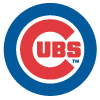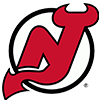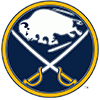Injury Risk Players to Avoid
by: Jeff Stotts (@RotoWireATC)
Injuries in baseball happen no matter what. Every player runs the risk of injury the moment they take the field. However, fantasy owners can protect themselves from having their season derailed by avoiding players with a greater amount of injury risk.
This year, these are the players that I will be avoiding due to their combination of risk and expected cost on draft day.
Matt Kemp, OF, LAD
The Dodgers outfielder has missed 145 games over the last two seasons after missing just 11 in the four previous years combined. He's been sidelined with an assortment of ailments including nagging hamstring problems, a torn labrum in his shoulder, and a left ankle sprain.
Each of these injuries presents their own set of issues. Hamstring strains are notoriously pesky, particularly for a player dependent on speed. Couple these deficiencies with offseason ankle surgery and the risk of muscle imbalances and recurring injury with Kemp increases.
If the lower body problems weren't enough to scare you away, keep in mind that Kemp's left shoulder needed an additional surgery this offseason to address issues with the acromioclavicular (AC) joint. This comes one year after Kemp underwent a labrum repair in the glenohumeral joint of the same shoulder.
Even with the injuries occurring to his non-dominant shoulder, they appeared to limit Kemp's power at the plate. His slugging percentage was the lowest of his career and he picked up just 21 extra-base hits, including
Injury Risk Players to Avoid
by: Jeff Stotts (@RotoWireATC)
Injuries in baseball happen no matter what. Every player runs the risk of injury the moment they take the field. However, fantasy owners can protect themselves from having their season derailed by avoiding players with a greater amount of injury risk.
This year, these are the players that I will be avoiding due to their combination of risk and expected cost on draft day.
Matt Kemp, OF, LAD
The Dodgers outfielder has missed 145 games over the last two seasons after missing just 11 in the four previous years combined. He's been sidelined with an assortment of ailments including nagging hamstring problems, a torn labrum in his shoulder, and a left ankle sprain.
Each of these injuries presents their own set of issues. Hamstring strains are notoriously pesky, particularly for a player dependent on speed. Couple these deficiencies with offseason ankle surgery and the risk of muscle imbalances and recurring injury with Kemp increases.
If the lower body problems weren't enough to scare you away, keep in mind that Kemp's left shoulder needed an additional surgery this offseason to address issues with the acromioclavicular (AC) joint. This comes one year after Kemp underwent a labrum repair in the glenohumeral joint of the same shoulder.
Even with the injuries occurring to his non-dominant shoulder, they appeared to limit Kemp's power at the plate. His slugging percentage was the lowest of his career and he picked up just 21 extra-base hits, including a career-worst six home runs.
Kemp's value comes from his ability to impact multiple categories. Unfortunately, injuries to his upper and lower body have led to a decrease in productivity across the board and using an early-round pick on him is a huge gamble.
Albert Pujols, 1B, LAA
The three-time NL MVP hasn't been quite the same since leaving St. Louis for Anaheim. His first season was solid, though the production was down by his normal lofty standards, and last season was easily the worst of his career. Plagued by chronic plantar fasciitis in his left foot, Pujols finished the year with career lows in on-base percentage, slugging percentage, batting average, and home runs. The inflamed plantar fascia clearly played a role, as Pujols was visibly limited in the batter's box and on the basepaths. The fascia ultimately tore, allowing Pujols to avoid surgery, but it isn't the only issue here. Pujols needed a knee debridement last offseason on his right knee, which was also a problem throughout the year.
Pujols has had a quiet offseason and is reportedly feeling significantly better, but don't overinvest based on these reports. Keep in mind that his peripheral numbers have been on a steady decline and questions about his true age still linger. He could be in line for a bounce back season, but it comes with a considerable amount of associated risk.
Chase Utley, 2B, PHI
Utley was able to play 131 games last year, his highest total since 2009. However, the aging second baseman remains a risk having previously been diagnosed with a degenerative condition in both of his knees.
Utley suffers from chondromalacia, a condition that occurs as the cartilage of the knee begins to soften or break down, compromising the kneecap's ability to efficiently glide along the surface of the joint. As a result, the individual experiences chronic pain and inflammation. Rehabbing and strengthening the surrounding musculature can combat these issues by minimizing the forces placed through the knee and damaging the cartilage. However, cartilage is difficult to repair once damaged, and any available surgical options come with an extensive rehab.
Further, many of the contributing factors that result in chondromalacia are considered red flags for arthritis. Utley will be 35 entering spring training and starting his 11th season in the league. He's participated in over 1,300 big league games, subjecting his knees to constant wear and tear. Without the benefit of a designated hitter spot, Utley will once again be relied upon to carry big defensive and offensive loads, adding further stress to his knees. There's no guarantee Utley will be limited by his knees, but he does remain one of the riskier known commodities especially with a younger crop of second basemen starting to emerge.
Ryan Howard, 1B, PHI
Howard is another Philadelphia stalwart dealing with lower leg issues that should affect his draft status for the upcoming season. Initially believed to be arthritis, Howard missed a portion of the season dealing with an injury that was ultimately discovered to be a meniscus tear. The menisci are comprised of fibrocartilage and sit between the bones of the leg acting as a shock absorber. Their position on the tibia leaves them vulnerable to injury and they can be damaged in a variety of ways. Generally, these pieces are removed arthroscopically in a process known as a meniscectomy. Howard underwent the procedure in July and reported no pain in late November after months of rehab.
However, Howard's past comes into play here. In 2011, Howard battled ankle problems in this same leg. He utilized cortisone injections to treat the area before rupturing his left Achilles. His return from Achilles surgery was delayed following an infection in the area. Multiple injuries in one extremity will elevate his risk moving forward. As was the case with Utley, the lack of a DH will force Howard onto the field, testing the limits of his twice operated upon left leg.
Josh Hamilton, OF, LAA
Hamilton is a guy whose all-out style-of-play is invaluable, but is often detrimental to his health. Since making his way back from drug and alcohol abuse, Hamilton has endured a broken shoulder during a head-first slide, required surgery to repair an abdominal tear, and played with painful back spasms and broken ribs.
His first year with the Angels was filled with more of the same as wrist, back, and ankle problems limited him at various points throughout the season, even though he was able to appear in over 150 games for the first time since 2008. The glaring difference was his sharp decline in production. His RBI total fell by nearly 50 and he hit 22 fewer home runs than in 2012. Erratic play and a propensity for injury make owning Hamilton a precarious proposition.
Jose Reyes, SS, TOR
The shortstop is entering his 12th MLB season and is coming off a rocky first campaign in Toronto. Last season, Reyes was limited to 93 games after suffering a serious left ankle sprain that kept him out of the lineup for over two months. The pain lingered and Reyes finished with just nine stolen bases and 27 extra-base hits after being activated from the 60-day DL.
Though Reyes's ankle likely benefited from a quiet offseason, his previous lower leg issues remain a risk. Reyes has battled calf and hamstring problems throughout his career. These two lower leg muscle groups are tightly linked and an injury to one can tax the other, resulting in a cascade injury. These previous injuries significantly elevate Reyes's inherent risk, which is only further elevated when you account for the unyielding surface of the Rogers Centre.
Troy Tulowitzki, SS, COL
Like Reyes, Tulowitzki is an extremely talented shortstop, but he has been limited by his ability to stay healthy. Since 2007, Tulowitzki's list of injuries includes a torn quadriceps tendon, a lacerated right hand, a fractured left wrist, a rotator cuff strain, and broken ribs, in addition to groin and hip issues.
Some of the injuries, particularly the broken wrist and hand laceration, have been unlucky, but his chronically injured left lower extremity raises serious red flags. He missed time last season with lingering soreness in the leg, suggesting that his biomechanics may still be an issue. He's a top-level talent at a shallow position but his past suggests he can't be counted on to play 150 games.
Stephen Strasburg, SP, WAS
Strasburg's inclusion should come as little surprise as his recovery from 2010 Tommy John surgery sparked a heated debate on the validity of an innings limit. The Nationals tuned out the critics and limited Strasburg to just 159 innings in the 2012 season. He was healthy for the majority of 2013, with the exception of a brief trip to the disabled list for a right latissimus dorsi strain. A forearm issue also popped up in September that may have been caused by bone chips in his previously repaired right elbow.
He underwent a debridement procedure in October to remove the fragments and is expected to be ready for spring training. Still, his inability to avoid elbow problems is a bit disconcerting and he still has yet to pitch over 200 innings in a season. Questions about his mechanics also remain, making him one of the riskier upper echelon pitchers on draft day.
Johnny Cueto, SP, CIN
The Reds right-hander made three separate trips to the disabled list for a strained latissimus dorsi muscle. The "lat" is a muscle located along the spine and shoulder that is responsible for moving both the shoulder and back in multiple directions. Strains in this area are common for pitchers with players like Roy Halladay, Jake Peavy, and Strasburg all missing time in recent seasons with the injury. However, the recurrence of Cueto's injury and a previous oblique strain hint at issues with his core strength or mechanics.
Cueto has twice altered his delivery and pitching arsenal in an attempt to avoid these kinds of injuries, yet the issues continue to linger. Further, constant tinkering with the delivery can place undue stress on other areas of the body and leave an individual susceptible to new injuries. Cueto's numbers make him an attractive pick, but he can't help you if he doesn't play.
Josh Johnson, SP, SD
The Padres signed Johnson to a one-year deal during the offseason, despite the lingering questions about his health. Johnson's injury problems date back as far as 2007 when he needed Tommy John surgery on his pitching elbow. He would return after 11 months of rehab and pitch effectively for the majority of two seasons. However, right shoulder inflammation ended his 2011 season and a hamstring issue ended his 2012 campaign.
The injury bug followed him to Toronto in 2013 as inflammation in his triceps and knee limited him throughout last season. His season ended in August following a forearm strain and a debridement surgery was ultimately needed to remove bone chips from his elbow. These numerous injuries may very well be linked as an early limitation resulted in a cascade effect on his entire throwing arm. Don't let the allure of Johnson pitching in Petco Park overshadow the high number of red flags in his medical file.




























